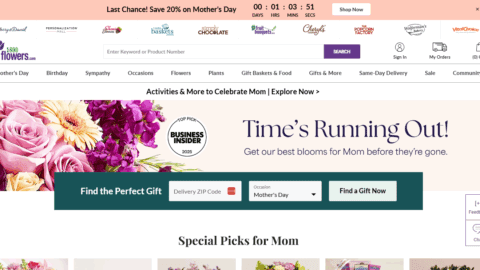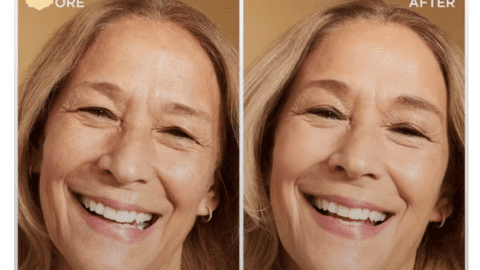Along with social media sites, retailers are featuring videos in email campaigns and on web sites, enabling consumers to access video clips on their mobile devices. “The goal is to reach as many consumers as possible, wherever they are, and all platforms and devices are potential access points,” noted Verna.
Verna outlined five best practices for e-Commerce video, including:
- Limit the running time of product videos;
- Feature average people in product videos;
- Use social media and email as promotional platforms for video programs;
- Scale video programs without relying on automated workflows; and
- Utilize performance metrics to evaluate program success.
Advertisement
Other industry executives specializing in video implementation support Verna’s assertions. Product video length should vary based on the complexity of a product, with duration coming second to conversion rate impact, noted Craig Wax, CEO of Invodo, an e-Commerce video solution provider. “It is better to have someone watch 15% of a video and buy than watch 85% of the video and not buy,” he asserted. “For example, explaining a simple product like a toy shouldn’t take much time, while a complex product such as a computer or smartphone might take longer. Set your communication objectives first then go for the shortest video that meets those objectives.”
Mobile advertising is another effective medium for video, according to Ujjal Kohil, CEO of Rhythm NewMedia. “In-stream mobile video advertising is a great tool for branding campaigns and getting people into stores as well as promoting new products through custom call-to-action buttons,” Kohil told Retail TouchPoints.
Regarding mobile video advertising and customer engagement, Kohil shared five best-practice tips for retailers:
- Run multiple types of video ads to reach the largest possible audience;
- Combine video and display advertising to enhance engagement;
- Increase consumer engagement with long-form video ads by encouraging tap-to-view videos;
- Utilize custom buttons to create a unique, interactive brand experience in video ads; and
- Display ads alongside premium content to make branding more effective.
Mobile video advertising with premium content is vital to marketing success, Kohil noted. “Consumers are more willing to watch a video advertisement when it is properly placed within the user experience. Video ads played before premium content have some of the highest completion rates in the industry — 87% on Rhythm properties, for example — because consumers are comfortable with the value exchange of watching an ad to access premium content.”
Retailers Use Video To Educate Consumers
Aside from product videos, retailers are educating consumers through how-to videos that describe an application, product or solution. For example, Invodo helped furniture retailer Stacks and Stacks develop clips that describe how to create certain products.
Retailer web sites are primary venues for e-Commerce videos, according the eMarketer report: “This is where customers are most likely to shop and where the merchant has full control over the presentation of the clip and the overall branding experience.”
Invodo’s Wax added: “Our experience is that [how-to] videos are heavily-weighted toward traditional product videos that describe core features and benefits. That’s where retailers are starting, in part because it’s where they can quantify the benefits most easily.”
Luxury Brands See Success Through Mobile Video
Customer engagement, increased sales and customer loyalty are three of the primary motivations for luxury brands looking to implement mobile video. Through video, consumers already familiar with these brands can understand the inspiration behind a photo shoot via a behind-the-scenes video, for example, or gain inside information on the history of a brand’s origin.
Luxury merchants — such as BMW, Burberry, Chanel and Louis Vuitton — also are using video in recent mobile advertising campaigns. Burberry employed mobile video to launch its Autumn Winter 2011 collection. Inspired by British portraits and Sixties-era ads, the campaign includes digital media technology such as photo shoots and a campaign video promo with a social media focus. More than 5,000 Facebook members “Liked” the campaign video during the first week it was uploaded, while 230 comments filled the timeline.
Chanel also experienced success when it recently rolled out a 30-second video ad with prominent music to unveil its luxury J12 Chromatic watch collection. With a focus on product features, the video uses a drum roll to introduce the watch through a chrome-like sea as it engages and educates viewers on the luxury item.
Incorporating music into video helps grab consumer attention, but before doing so, retailers first must consider their brands, target customers and communication objectives. “Music can connect with consumers emotionally,” Wax noted. “Examine your communication objectives and consider if music enhances or detracts. For example, music stirs emotions when trying to connect on a brand level. But if your goal is to communicate product features and benefits, it may make sense to have music take a background role, if any at all.”
One of the most influential elements to include in a video campaigns is a spokesperson, added Wax. “By including a spokesperson in the video, [retailers] humanize the product and brand,” he said.
User-Generated Reviews Impact Consumer Perception
Many retailers are now encouraging feedback and comments from shoppers in order to increase consumer trust in a brand. Consumers often will share their reasons for liking a product via commentary sections on web sites and social networking sites. By partnering with a video e-Commerce specialist, retailers can identify reviewers and process submitted videos.
Additionally, as consumers continue to focus heavily on social media sites such as YouTube and Facebook, retailers are utilizing those sites as secondary vehicles for e-Commerce videos. “Social media sites are visited by hundreds of millions of people each month, so even retailers with a substantial web presence of their own can benefit from the expanded reach these social venues offer,” noted Verna.
Innovative Video Strategies Deployed By Retailers
Retailers also use videos as an alternative to customer service calls or an email marketing feature. As cross-channel strategies continue to expand in the retail industry, many retailers use in-store quick response (QR) codes to direct shoppers to a product video via their mobile device. “QR links to video provide a rich interaction without the daunting task of scrolling through tiny text on a small mobile screen,” Wax said.
Utilizing video in email marketing has proven to increase click-through rates. This normally is accomplished via clickable thumbnail images linked to a landing page that hosts the video. By utilizing this technique, home appliance retailer Whirlpool Outlet received record response rates to an email campaign.
Videos displayed in brick-and-mortar locations also offer consumers the option to learn more about the product prior to purchase. As kiosks gain momentum in these locations, noted Wax, retailers can take advantage of the opportunity to reach consumers with engaging video content where they actively seek information.
The Correlation Between SEO And Videos
With the recent growth in retail-related videos on YouTube, consumers are more likely to engage with brands on this medium via a quick search. E-Business video provider SundaySky published a study titled “State Of Video E-Commerce: Quarterly Research Report – Q1 2011,” which indicated that consumers continue to embrace e-Commerce videos. Statistics discussed in the report include:
- Nearly 96,000 retail videos posted on YouTube in Q1 2011 — a 9% quarter-over-quarter increase; and
- 420 million views of retail videos on YouTube — a 13% quarter-over-quarter increase.
As social media continues to spark consumer interest, many retailers have focused on creating a YouTube presence for their brands. Approximately 50% of retailers posted more than 100 videos on YouTube in Q1 2011, as opposed to 42% in the previous quarter, as cited in the report.
Retailers are reaping the benefits of this trend, according to the report, “Online Video + SEO = Big Dollars.” To illustrate how online videos have a significant presence in search engine result pages, SundaySky analyzed video initiatives from shoe eTailer Zappos. Highlights from the case study analysis include:
- 8.1% of the tested keywords generated Zappos video results;
- The increase in monthly Zappos traffic accredited to video results amounted to more than 77,000 visits per month; and
- The total value of traffic derived from the limited keyword pool tested amounted to $551,731 per year.
The Zappos case study revealed that retailers can utilize video to maximize search exposure. “Zappos managed to move quickly and capture market share through heavy investment in video production and work with SEO specialists to apply best practices for video,” said Yaniv Axen, CTO and Co-Founder of SundaySky. “While today Zappos sees more value in video SEO than most other retailers, the trends we’ve identified in the recent report and the ones preceding it clearly show that in one to two years from today all retailers will experience a similar effect.
“To ensure they are generating the highest value possible, e-businesses today must measure all of their activities to ensure they are generating the highest value in a lean economy and competitive marketplace,” Axen said “This is just as true for online video. Marketers therefore are faced with three challenges: determining what to measure, how to measure it and how to improve results so marketing can be recognized as a revenue engine.”
Another way to increase the value of videos is to focus on deploying comprehensive SEO strategies. Axen suggested four ways retailers can increase the SEO value of their videos: by following basic SEO guidelines, making the videos more accessible to site visitors, scaling videos to reach long-tail keywords, and automating production to have video available as soon as new products are introduced.
The graphic attraction of video versus written content is increasingly impacting consumer behaviors and preferences, and retailers are taking note. “The use of video on web sites has shifted from an interesting anomaly to a critical feature that boosts search engine result standings, increases stickiness and improves conversion rates,” said Axen. “Customers now prefer to watch video rather than read content; retailers understand that they must provide product and brand videos to meet shoppers’ demands.”
In response, retailers are incorporating video into their marketing strategies and are learning how to optimize videos for different platforms, such as mobile, to reach consumers regardless of their location. Additionally, based on research findings, consumers are paying closer attention to their peers, scanning for reviews and adding their own input based on their experiences. Retailers must keep pace with video and other similar trends in order to continue to grow sales and improve customer loyalty.















